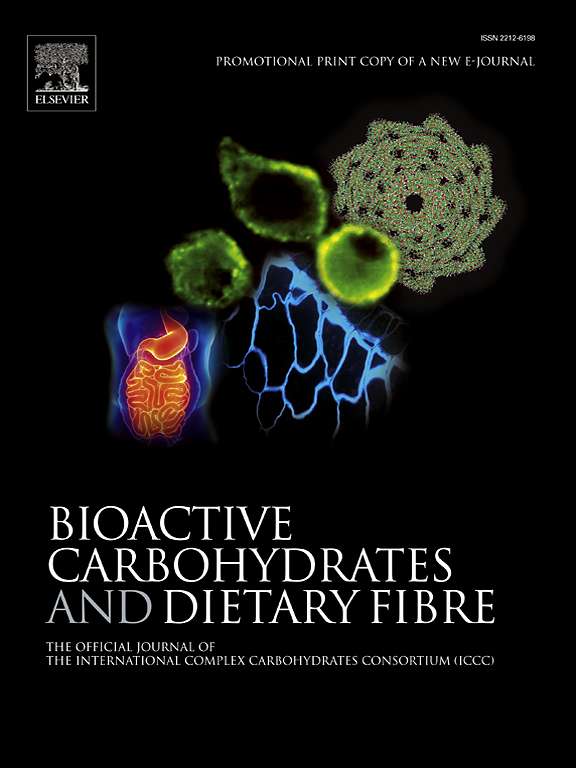Dietary prebiotic combination improves immunological and hematological parameters in weaned pigs
IF 3.6
引用次数: 0
Abstract
As antimicrobial resistance is a global public health problem and as known the use of prebiotics on animal nutrition have antimicrobial effects, we hypothesized the use of prebiotic additives can be an alternative to in-feed antibiotics for piglets to control sanitary challenge. Thus, the aim of this study was to evaluate the inclusion of prebiotics mannan-oligosaccharide (MOS), β-glucan, fructooligosaccharide (FOS) and galacto-oligosaccharides (GOS) to replace antibiotics as growth promoters, on immunological and hematological parameters of 21d-old weaned pigs challenged with intramuscular injection of 30 μg kg−1 body weight of Escherichia coli lipopolysaccharide (LPS). Forty weaned piglets (7.2 kg) fed: CON = basal diet (BD) plus 120 ppm of halquinol; Mβ = BD plus a blend of MOS and β-glucan; F9G1 = BD plus a blend of MOS and β-glucan and a blend of FOS/GOS (ratio 9:1); F7G3 = BD plus a blend of MOS and β-glucan and a blend of FOS/GOS (ratio 7:3); F5G5 = BD plus a blend of MOS and β-glucan and a blend of FOS/GOS (ratio 5:5). After LPS challenge, the animals fed F9G1 had higher hydrogen peroxide (H2O2) and the same nitric oxide (NO) serum concentration than CON. Animals fed Mβ and F9G1 showed similar serum C-reactive protein (CP) concentration than CON and serum cytokine tumor necrosis factor alpha (TNF-α) concentration were higher in animals fed F9G1 or F5G5 than CON. In general, we concluded that treatment F9G1, is better for immune response during immunological challenge, because more effective immunological variables were affected (H2O2, NO, CP and TNF-α).
饲粮中益生元组合可改善断奶仔猪的免疫和血液参数
由于抗菌素耐药性是一个全球性的公共卫生问题,并且众所周知,在动物营养中使用益生元具有抗菌作用,我们假设使用益生元添加剂可以替代饲料中的抗生素,以控制仔猪的卫生挑战。因此,本研究旨在研究添加甘露寡糖(MOS)、β-葡聚糖、低聚果糖(FOS)和半乳糖寡糖(GOS)等益生元替代抗生素作为生长促进剂对21日龄断奶仔猪肌肉注射30 μg kg−1体重大肠杆菌脂多糖(LPS)免疫和血液参数的影响。40头断奶仔猪(7.2 kg)饲喂:CON =基础饲粮(BD) + 120 ppm喹啉;Mβ = BD + MOS和β-葡聚糖的混合物;F9G1 = BD + MOS和β-葡聚糖的混合物和FOS/GOS的混合物(比例为9:1);F7G3 = BD + MOS和β-葡聚糖的混合物和FOS/GOS的混合物(比例为7:3);F5G5 = BD + MOS和β-葡聚糖的混合物和FOS/GOS的混合物(比例为5:5)。LPS刺激后,饲喂F9G1的动物血清过氧化氢(H2O2)和一氧化氮(NO)浓度高于CON,饲喂Mβ和F9G1的动物血清c反应蛋白(CP)浓度高于CON,饲喂F9G1或F5G5的动物血清细胞因子肿瘤坏死因子α (TNF-α)浓度高于CON。综上所述,免疫刺激时,饲喂F9G1的动物免疫应答效果更好。因为更有效的免疫变量(H2O2, NO, CP和TNF-α)受到影响。
本文章由计算机程序翻译,如有差异,请以英文原文为准。
求助全文
约1分钟内获得全文
求助全文
来源期刊

Bioactive Carbohydrates and Dietary Fibre
Agricultural and Biological Sciences-Food Science
CiteScore
6.00
自引率
0.00%
发文量
38
期刊介绍:
 求助内容:
求助内容: 应助结果提醒方式:
应助结果提醒方式:


